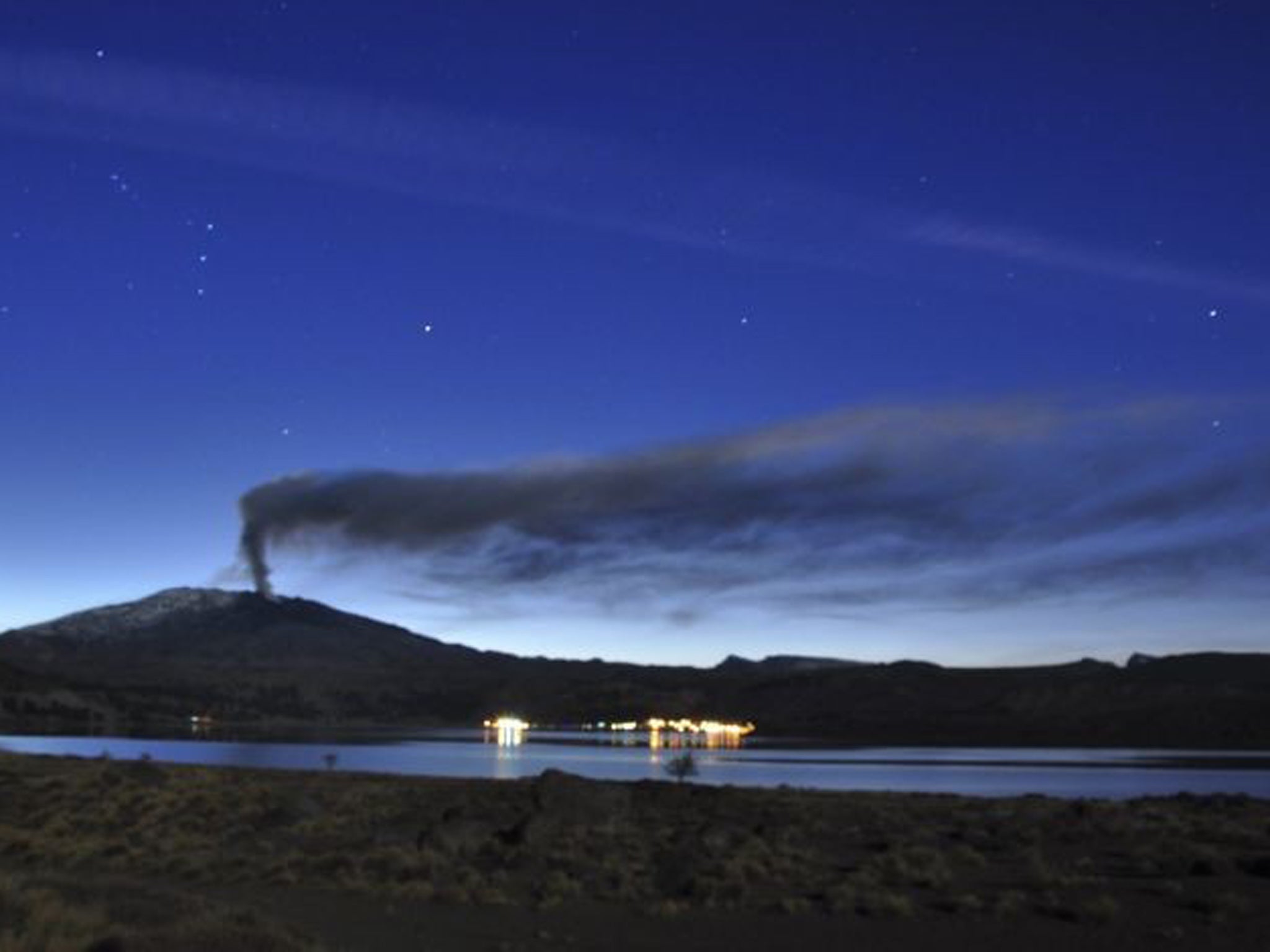Chile and Argentina put on red alert over Copahue volcano
Over 2,000 people evacuated across 15.5 mile radius amid fears of eruption

Chilean and Argentine officials have issued a red alert for the increasingly active Copahue volcano bordering the two countries and ordered the evacuation of about 3,000 people.
Chilean interior and security minister Andres Chadwick said the increased activity could lead to an eruption and officials would soon begin evacuating 2,240 people, or 460 families, within a 25-kilometer (15.5-mile) radius.
“This evacuation is obligatory; it's not voluntary,” Chadwick told reporters.
Chile's Emergency Office said the evacuation could last about 48 hours, but could be delayed because of heavy rains.
The nearly 10,000-foot (2,965-meter) sits in the Andes cordillera, overlapping Chile's Bio Bio region and Argentina's Neuquen province.
Argentine officials raised their alert level to red yesterday afternoon due to higher seismic activity and ordered the evacuation of about 600 people from the town of Caviahue to the neighboring city of Loncopue.
“The volcano is not erupting yet, but as a preventive measure we've decided to evacuate the population,” the Neuquen Crisis Committee said.
“There are no ashes in Caviahue. The vapor plume has descended, but in the last days, seismic activity has increased. That's the reason behind the change of alert in Argentina and Chile.”
Copahue registered high seismic activity in December when its ash cloud billowed almost a mile high.
The volcano had a major eruption in 1992, according to the Chilean Mining Ministry's Sernageomin geology unit. It became highly active with blasts and gases in 2002, in its strongest activity in more than 20 years.
Chile has more than 3,000 volcanoes the Andes and about 500 of them remain active.
AP
Join our commenting forum
Join thought-provoking conversations, follow other Independent readers and see their replies
Comments
Bookmark popover
Removed from bookmarks